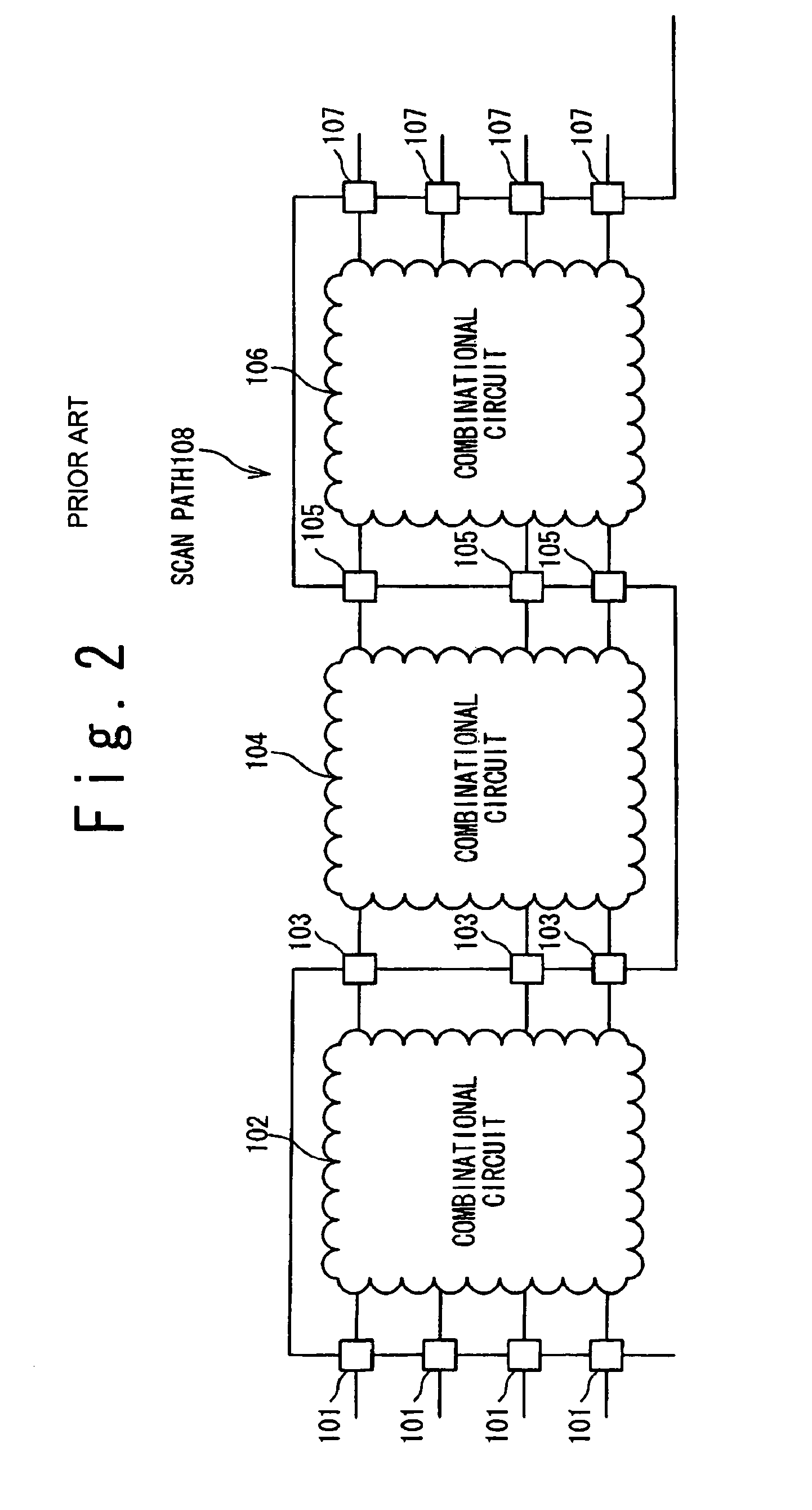Semiconductor integrated circuit with delay test circuit, and method for testing semiconductor integrated circuit
a technology of semiconductor integrated circuit and test circuit, which is applied in the direction of instruments, measurement devices, computing, etc., can solve the problems of inability to carry out at-speed delay test, circuit may be present, and inability to detect the delay,
- Summary
- Abstract
- Description
- Claims
- Application Information
AI Technical Summary
Benefits of technology
Problems solved by technology
Method used
Image
Examples
first modification
[First Modification]
[0099]In the semiconductor integrated circuit shown in FIG. 11, if the difference in delay time between the first clock tree 62A and the second clock tree 62B is great, it is necessary to increase the difference between output timings of clock pulses outputted from the delay test circuits 10A and 10B. An upper limit of the difference between the output timings of the clock pulses depends on the number of bits of the clock waveform setting data 14 settable to the delay test circuits 10A and 10B. For instance, if the number of bits of the clock waveform setting data 14 is four, the difference in delay time between the first clock tree 62A and the second clock tree 62B is allowed up to three clock periods of the test reference clock signal 74.
[0100]The simplest method for increasing the difference between output timings at which the delay tests 10A and 10B output the clock pulses is to increase the number of bits of the clock waveform setting data 14 supplied to at ...
second modification
[Second Modification]
[0107]As evident from the operations of the delay test circuits 10 described above, in the semiconductor integrated circuit shown in FIG. 11, the timings at which the delay test circuits 10A and 10B output the clock pulses are adjusted in units of clock periods of the test reference clock signal 74. However, the difference in delay between the first clock tree 62A and the second clock tree 62B is not always in units of clock periods. It is, therefore, preferable to be able to adjust the timings at which the delay test circuits 10A and 10B output the clock pulses more minutely.
[0108]FIG. 15 is a circuit diagram of a configuration of a semiconductor integrated circuit for making it possible to adjust the timings at which the delay test circuits 10A and 10B output the clock pulses more minutely. In the configuration of FIG. 15, one of the input PLL clock signal 20A supplied to the delay test circuit 10A and the input PLL clock signal 20B supplied to the delay test ...
PUM
 Login to View More
Login to View More Abstract
Description
Claims
Application Information
 Login to View More
Login to View More - R&D
- Intellectual Property
- Life Sciences
- Materials
- Tech Scout
- Unparalleled Data Quality
- Higher Quality Content
- 60% Fewer Hallucinations
Browse by: Latest US Patents, China's latest patents, Technical Efficacy Thesaurus, Application Domain, Technology Topic, Popular Technical Reports.
© 2025 PatSnap. All rights reserved.Legal|Privacy policy|Modern Slavery Act Transparency Statement|Sitemap|About US| Contact US: help@patsnap.com



